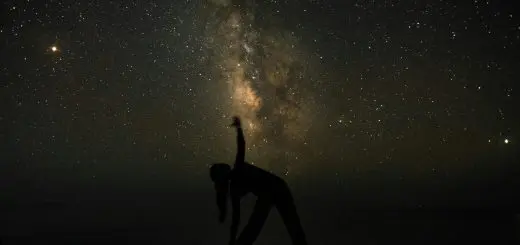Fenrir: The Monstrous Wolf in Norse Lore

Looking for more amazing products? Check out our online store and explore our collection here! Happy shopping!
Before diving in, please note: This post is for informational purposes only. If you’d like to know more about how we approach topics, feel free to check out our friendly Disclaimer Page.
Hey there, amazing readers! 
We’re committed to delivering quality posts, and your support (even just sticking around despite the ads) means everything to us. So, bear with us, and thanks for helping us keep the good vibes rolling. Now, on to the fun stuff!
TRANSLATE BUTTON AT THE END OF THE ARTICLE
Overview
In Norse mythology, Fenrir is a monstrous wolf that holds great significance.
Known as the son of the trickster god Loki, Fenrir is destined to play a pivotal role in the cataclysmic event known as Ragnarok.
This article explores the origins and importance of Fenrir in Norse lore, describing his physical attributes, role in Ragnarok, and the prophecy surrounding his fate.
It also delves into Fenrir’s parentage and siblings, his imprisonment by the gods, and his symbolic significance in Norse culture.
Furthermore, it examines Fenrir’s portrayal in popular culture and modern adaptations, highlighting his complex and mysterious character.
Lastly, it discusses Fenrir’s influence on other mythical creatures in various mythologies.
Origins and Importance in Norse Mythology
Fenrir’s origins can be traced back to the god Loki and a giantess named Angrboda.
Born in the land of the giants, Jotunheim, Fenrir is the brother of the serpent Jormungandr and the half-dead, half-living goddess Hel.
The three siblings are considered significant figures in Norse mythology, embodying chaos, destruction, and death.
Fenrir’s importance lies in his role as a harbinger of Ragnarok, the apocalyptic battle between the gods and various forces of chaos.
Description and Physical Attributes of Fenrir
Described as a gigantic and fearsome wolf, Fenrir possesses an overwhelming presence.
In some accounts, he is depicted as having a monstrous size, with his lower jaw scraping the earth while his upper jaw reaches the skies.
His coat is said to be dark and matted, exuding an aura of darkness and malevolence.
Fenrir’s appearance strikes fear into the hearts of both gods and mortals, making him a formidable force in Norse mythology.
Fenrir’s Role in Ragnarok, the Norse Apocalypse
Fenrir’s most significant role is in the cataclysmic event known as Ragnarok, which marks the end of the world in Norse mythology.
According to prophecies, he will break free from his bonds and become a central figure in the battle against the gods.
Fenrir is destined to face the god Odin, resulting in the death of the Allfather.
This event signifies the destruction of the old order and the beginning of a new era, where chaos reigns supreme.
Prophecy and Foretelling of Fenrir’s Fate
The prophecy surrounding Fenrir’s fate is deeply intertwined with the concept of Ragnarok.
It is foretold that Fenrir’s fate is to kill Odin, the ruler of the gods, but in turn, be slain by Odin’s son, Vidar.
This cyclic pattern of death and rebirth is a common theme in Norse mythology, signifying the eternal struggle between chaos and order.
Fenrir’s destiny is seen as an inevitable part of the cosmic cycle, where destruction paves the way for rebirth.
Fenrir’s Parentage and Siblings in Norse Mythology
Fenrir’s parentage is notable, as he is the son of the mischievous god Loki and the giantess Angrboda.
Loki, a shape-shifter, often took the form of a wolf, which may have influenced Fenrir’s monstrous wolf-like appearance.
Fenrir’s siblings, Jormungandr and Hel, complete this trio of powerful and destructive beings.
Together, they embody the forces of chaos and destruction that threaten the order of the Norse cosmos.
Fenrir’s Imprisonment and Binding by the Gods
Recognizing the danger Fenrir posed, the gods attempted to prevent Ragnarok by binding Fenrir.
They first approached him under the guise of a challenge, daring him to break free from various chains.
Fenrir effortlessly shattered each chain, earning the gods’ respect but also raising their concerns.
Eventually, the gods commissioned the dwarves to forge a magical chain called Gleipnir.
Explore the Path to Spirituality and Enlightenment – Start Here.
Trickery was employed to trick Fenrir into accepting this unbreakable chain, which bound him tightly.
Fenrir’s imprisonment ensures that he does not bring about Ragnarok prematurely.
The Symbolic Significance of Fenrir in Norse Culture
Fenrir holds significant symbolic importance in Norse culture.
As a representation of chaos and destruction, he serves as a reminder of the fragile balance between order and chaos.
Fenrir’s presence symbolizes the inherent dangers that threaten the stability of the cosmos.
Additionally, Fenrir embodies the unpredictable nature of life, where even the gods can be taken down by forces beyond their control.
The story of Fenrir serves as a cautionary tale, emphasizing the need for vigilance and preparedness in the face of potential upheaval.
Fenrir: The Symbol of Chaos and Destruction
Fenrir’s association with chaos and destruction is a central theme in Norse mythology.
His uncontrollable and savage nature symbolizes the inherent power of chaos, capable of tearing down even the mightiest of gods.
Fenrir’s presence represents the constant threat of disruption and upheaval, reminding both gods and mortals of the precariousness of their existence.
His symbolism serves as a reminder to respect natural forces, as unchecked chaos can bring forth catastrophic consequences.
Fenrir in Popular Culture and Modern Adaptations
Fenrir’s mythological significance has permeated popular culture and inspired numerous adaptations.
He is often depicted as a monstrous wolf in various forms of media, including literature, art, and video games.
Fenrir’s portrayal typically emphasizes his intimidating size, fearsome appearance, and his role as an agent of chaos.
These adaptations serve to introduce Norse mythology to a wider audience and showcase the enduring appeal of Fenrir as a fascinating character.
Fenrir: A Complex and Mysterious Character in Norse Lore
Fenrir’s character in Norse mythology is shrouded in mystery and complexity.
While he represents chaos and destruction, he also embodies the familial ties and the struggles of identity.
As the son of Loki, Fenrir’s existence raises questions about the nature of fate, free will, and the complexities of familial relationships.
His role as a catalyst for Ragnarok showcases his pivotal position in the mythological narrative, leaving room for interpretation and speculation on his true motivations and desires.
Fenrir’s Influence on Other Mythical Creatures
In various mythologies, Fenrir’s character has influenced the portrayal of other mythical creatures associated with chaos and destruction.
The theme of a monstrous wolf serving as a harbinger of doom can be seen in different cultures.
For example, in Germanic mythology, the creature known as Garmr closely resembles Fenrir, appearing as a monstrous wolf associated with the apocalypse.
Fenrir’s influence extends beyond Norse lore, highlighting his enduring impact on the mythologies of different civilizations.
Conclusion
Fenrir, the monstrous wolf in Norse lore, holds a significant place in Norse mythology.
As the son of Loki, his role in Ragnarok and his symbolism as a force of chaos and destruction make him a fascinating and complex character.
Fenrir’s physical attributes, parentage, and imprisonment by the gods further contribute to his mythological importance.
Through various adaptations and his influence on other mythical creatures, Fenrir’s enduring legacy continues to captivate and inspire.
Ultimately, Fenrir’s story serves as a powerful reminder of the delicate balance between order and chaos, urging us to acknowledge and respect the forces that shape our existence.

The Enlightenment Journey is a remarkable collection of writings authored by a distinguished group of experts in the fields of spirituality, new age, and esoteric knowledge.
This anthology features a diverse assembly of well-experienced authors who bring their profound insights and credible perspectives to the forefront.
Each contributor possesses a wealth of knowledge and wisdom, making them authorities in their respective domains.
Together, they offer readers a transformative journey into the realms of spiritual growth, self-discovery, and esoteric enlightenment.
The Enlightenment Journey is a testament to the collective expertise of these luminaries, providing readers with a rich tapestry of ideas and information to illuminate their spiritual path.
Our Diverse Expertise
While our primary focus is on spirituality and esotericism, we are equally passionate about exploring a wide range of other topics and niches 

To ensure we provide the most accurate and valuable insights, we collaborate with trusted experts in their respective domains 
Our blog originally focused on spirituality and metaphysics, but we’ve since expanded to cover a wide range of niches. Don’t worry—we continue to publish a lot of articles on spirituality! Frequently visit our blog to explore our diverse content and stay tuned for more insightful reads.
Hey there, amazing reader! 
Check out our store here and take a peek at some of our featured products below! Thanks for being awesome!














